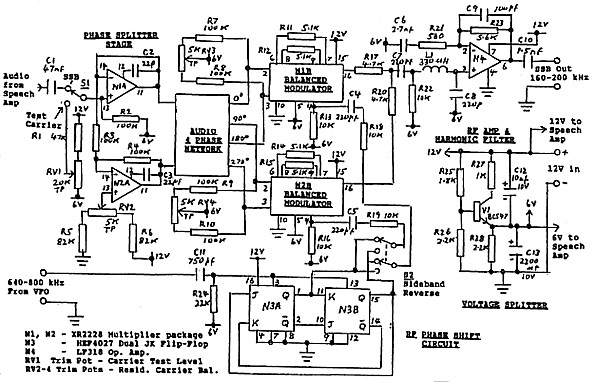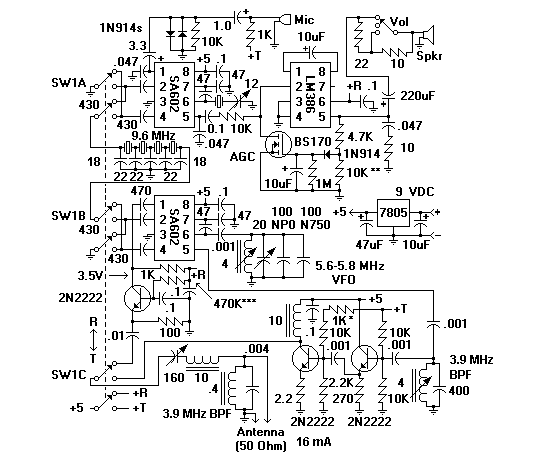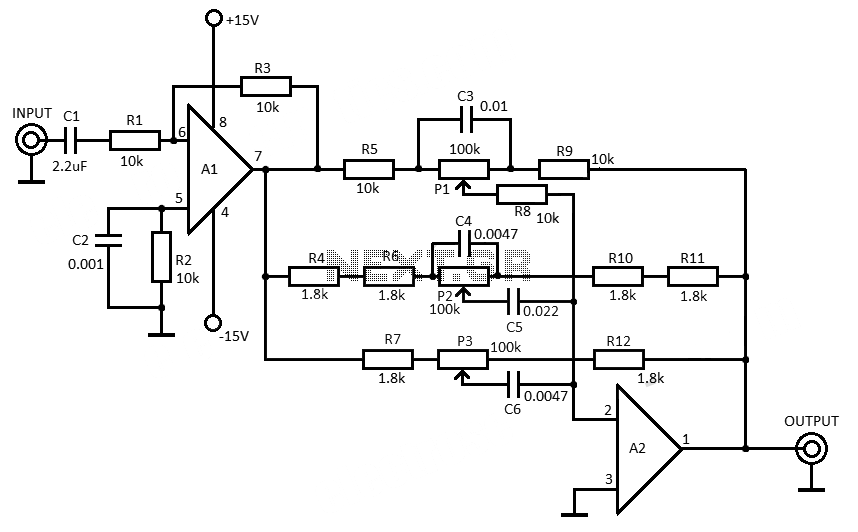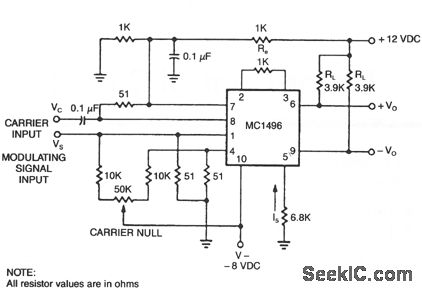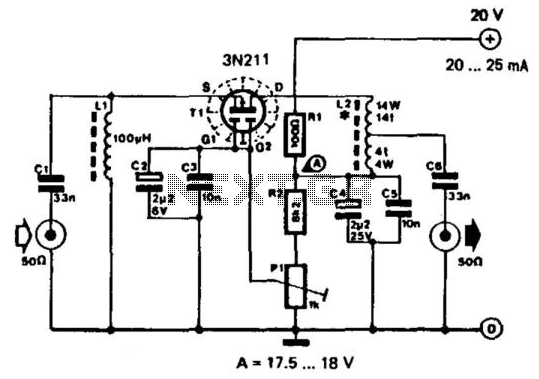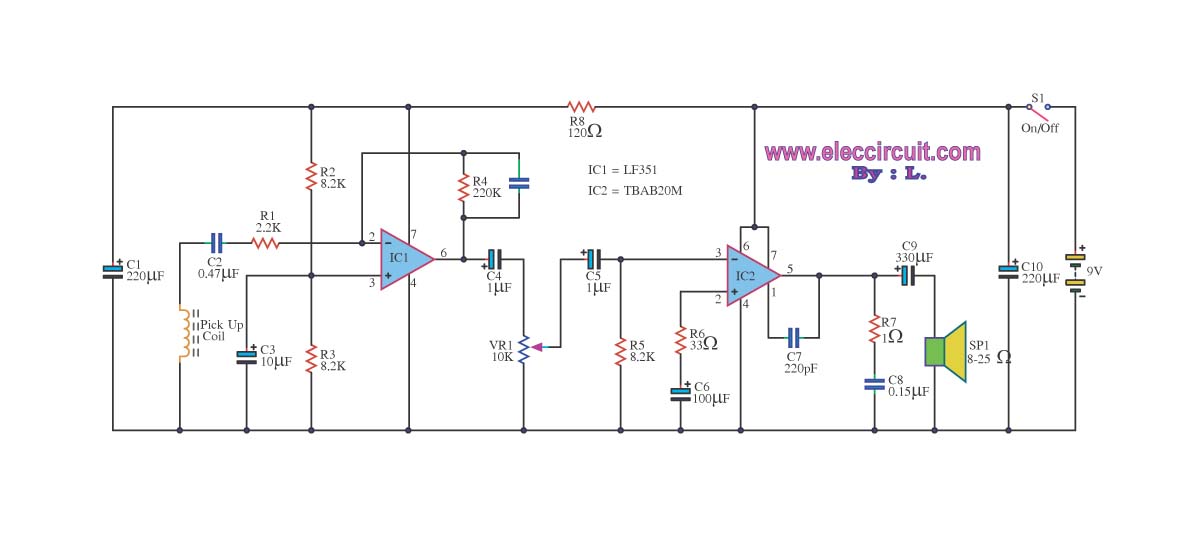
5 tubes QRP SSB Transceiver for 20m ham band
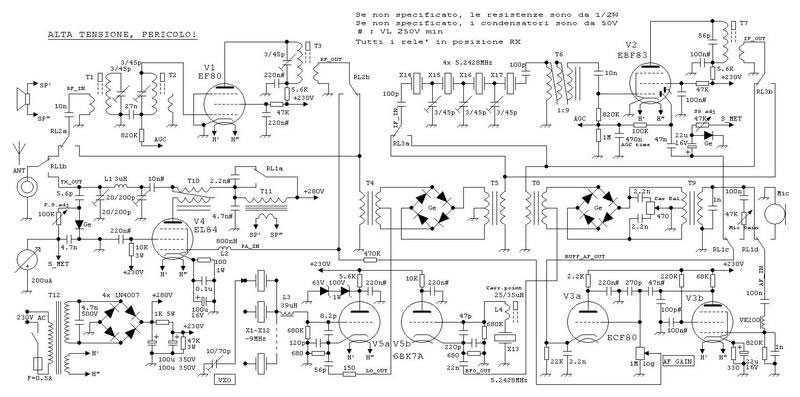
This true SSB transceiver is built around just 5 vacuum tubes, with no transistors nor ICs. Superhet receiver with AGC and S-meter drives a loudspeaker, 5W transmitter, very stable VXO uses CB crystals to cover 20m ham band. A project for skilled RF technicians with a good set of instruments. More: The architecture of this transceiver is based upon reversible use of its blocks. The 5 tubes, diode mixers and SSB filter all operate during reception and transmission. SSB filter is homebuilt 4poles ladder filter. Performance tested at bench and on-the-air.
This SSB (Single Sideband) transceiver is designed for amateur radio operators and is notable for its simplicity and reliance on vacuum tube technology, eschewing modern solid-state components such as transistors and integrated circuits. The core of the transceiver consists of five vacuum tubes, which are utilized in both the transmitter and receiver sections, enabling efficient operation in the 20-meter band.
The architecture employs a superheterodyne (superhet) receiver configuration, which is a common choice for high-performance radio receivers. This design includes an Automatic Gain Control (AGC) circuit that helps maintain consistent audio output levels despite varying signal strengths. Additionally, an S-meter is integrated into the design to provide visual feedback on signal strength, enhancing user experience during operation.
The transmitter section is capable of delivering 5 watts of output power, which is sufficient for effective communication over the 20-meter amateur band. A very stable Variable Crystal Oscillator (VXO) is employed, utilizing standard Citizens Band (CB) crystals to ensure reliable frequency stability during operation.
The transceiver's architecture allows for the reversible use of its functional blocks, meaning that the same components can serve dual purposes during both transmission and reception. This includes the diode mixers and the SSB filter, which is a custom-built, four-pole ladder filter designed to enhance selectivity and reduce interference. The performance of the transceiver has been validated through bench testing and practical on-the-air operation, confirming its reliability and effectiveness as a communication device.
This project is intended for skilled RF technicians who possess a comprehensive set of instruments, as the construction and alignment of vacuum tube circuits can be complex and require precise adjustments to achieve optimal performance. The unique design and vintage technology appeal to enthusiasts interested in traditional radio communication methods.This true SSB transceiver is built around just 5 vacuum tubes, with no transistors nor ICs. Superhet receiver with AGC and S-meter drives a loudspeaker, 5W transmitter, very stable VXO uses CB crystals to cover 20m ham band. A project for skilled RF technicians with a good set of instruments. The architecture of this transceiver is based upon reversible use of its blocks. The 5 tubes, diode mixers and SSB filter all operate during reception and transmission. SSB filter is homebuilt 4poles ladder filter. Performance tested at bench and on-the-a 🔗 External reference
This SSB (Single Sideband) transceiver is designed for amateur radio operators and is notable for its simplicity and reliance on vacuum tube technology, eschewing modern solid-state components such as transistors and integrated circuits. The core of the transceiver consists of five vacuum tubes, which are utilized in both the transmitter and receiver sections, enabling efficient operation in the 20-meter band.
The architecture employs a superheterodyne (superhet) receiver configuration, which is a common choice for high-performance radio receivers. This design includes an Automatic Gain Control (AGC) circuit that helps maintain consistent audio output levels despite varying signal strengths. Additionally, an S-meter is integrated into the design to provide visual feedback on signal strength, enhancing user experience during operation.
The transmitter section is capable of delivering 5 watts of output power, which is sufficient for effective communication over the 20-meter amateur band. A very stable Variable Crystal Oscillator (VXO) is employed, utilizing standard Citizens Band (CB) crystals to ensure reliable frequency stability during operation.
The transceiver's architecture allows for the reversible use of its functional blocks, meaning that the same components can serve dual purposes during both transmission and reception. This includes the diode mixers and the SSB filter, which is a custom-built, four-pole ladder filter designed to enhance selectivity and reduce interference. The performance of the transceiver has been validated through bench testing and practical on-the-air operation, confirming its reliability and effectiveness as a communication device.
This project is intended for skilled RF technicians who possess a comprehensive set of instruments, as the construction and alignment of vacuum tube circuits can be complex and require precise adjustments to achieve optimal performance. The unique design and vintage technology appeal to enthusiasts interested in traditional radio communication methods.This true SSB transceiver is built around just 5 vacuum tubes, with no transistors nor ICs. Superhet receiver with AGC and S-meter drives a loudspeaker, 5W transmitter, very stable VXO uses CB crystals to cover 20m ham band. A project for skilled RF technicians with a good set of instruments. The architecture of this transceiver is based upon reversible use of its blocks. The 5 tubes, diode mixers and SSB filter all operate during reception and transmission. SSB filter is homebuilt 4poles ladder filter. Performance tested at bench and on-the-a 🔗 External reference
